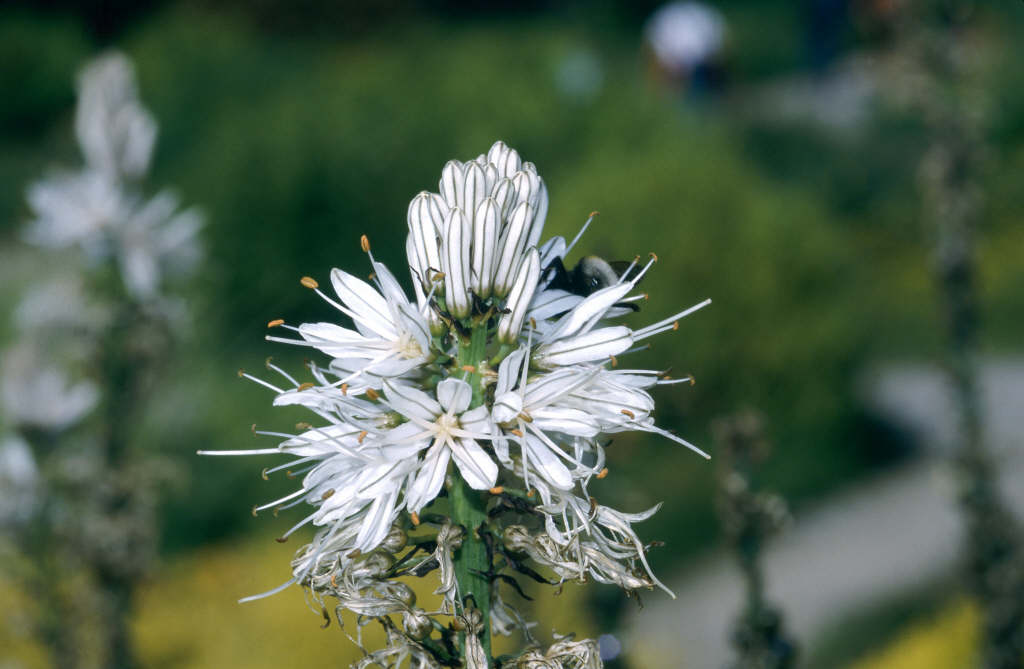Asphodelus albus
white asphodel
A perennial forming a dense clump of linear leaves, with pink-veined white flowers to 4cm across in simple or branched racemes in late spring

Buy this plant
Size
Ultimate height
0.5–1 metresTime to ultimate height
2–5 yearsUltimate spread
0.1–0.5 metresGrowing conditions
Moisture
Well–drainedpH
Acid, Alkaline, NeutralColour & scent
| Stem | Flower | Foliage | Fruit | |
| Spring | Pink White | Green | ||
|---|---|---|---|---|
| Summer | Green | |||
| Autumn | Green | |||
| Winter |
Position
- Full sun
Aspect
South–facing or West–facing or East–facing
Exposure
Exposed or Sheltered Hardiness
H4Botanical details
- Family
- Asphodelaceae
- Native to GB / Ireland
- No
- Foliage
- Deciduous
- Habit
- Tufted
- Genus
Asphodelus are rhizomatous perennials and annuals with clumps of linear basal leaves, and leafless stems bearing racemes or panicles of star-shaped, white or pink flowers, each tepal with a green or brown central vein
- Name status
Correct
- Plant range
- Europe
How to grow
Cultivation
Grow in moderately fertile, well-drained soil in full sun. Can die back in heavy, poorly-drained soil
Propagation
Propagate by seed, sown in pots in a cold frame in spring or propagate by division after flowering
Suggested planting locations and garden types
- Mediterranean climate plants
- Gravel garden
- Banks and slopes
- Flower borders and beds
Pruning
Although you can cut back flower stems after flowering the seedheads are attractive so can be left
Pests
Generally pest-free
Diseases
Generally disease-free
Get involved
The Royal Horticultural Society is the UK’s leading gardening charity. We aim to enrich everyone’s life through plants, and make the UK a greener and more beautiful place.